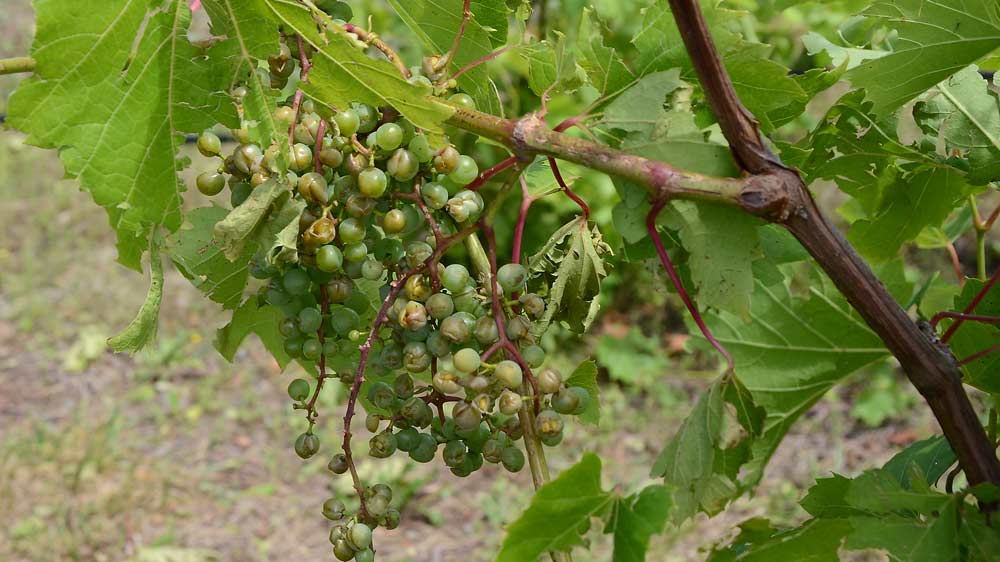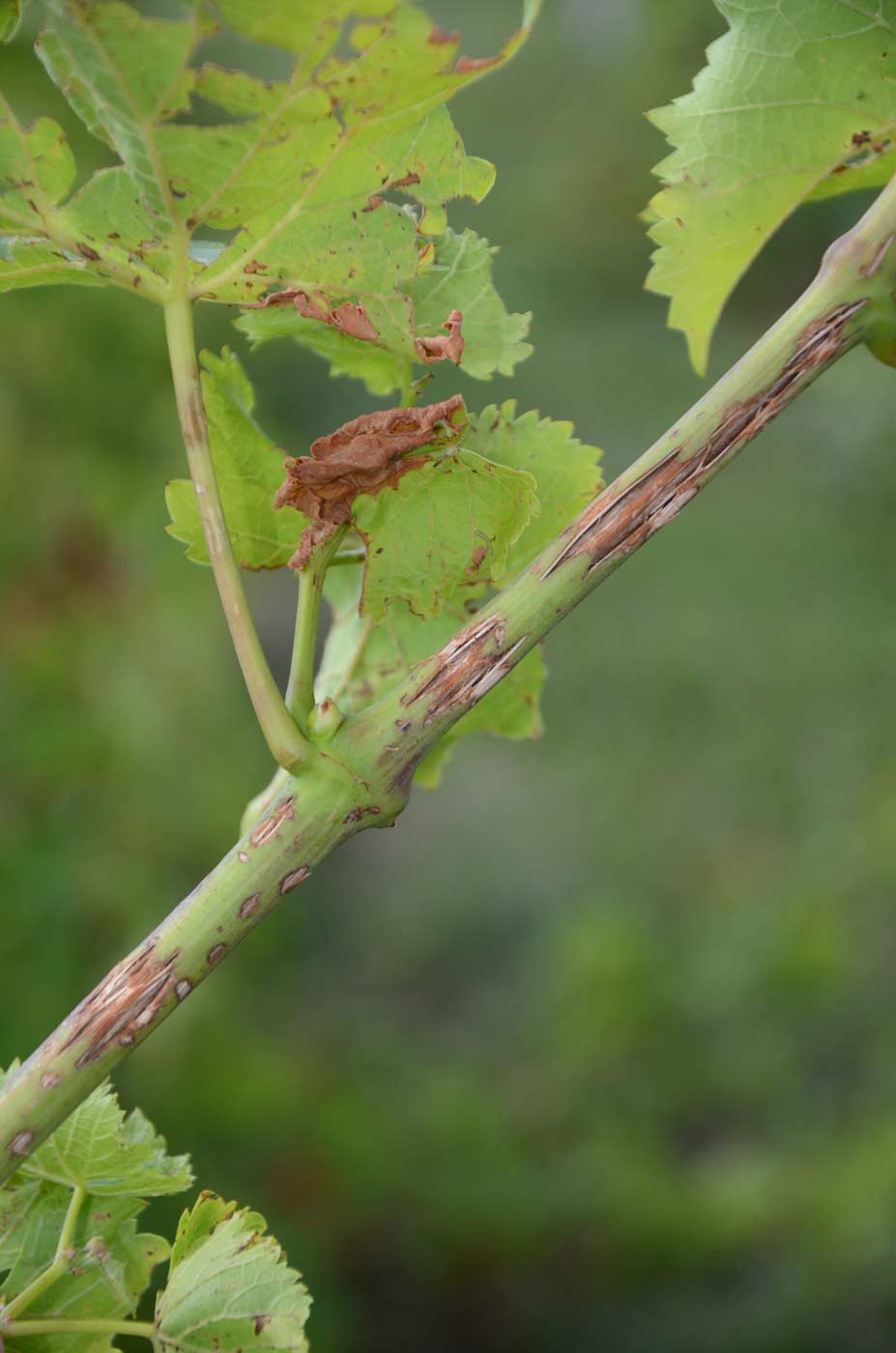
Quarter-sized hail ripped sideways through vineyards in northwestern Lower Michigan, leaving grapes pummeled. The ferocity of the August 2015 storm left growers wondering if their vines would be able to recover in 2016. (Courtesy Duke Elsner)
On Aug. 2, 2015, straight-line winds of 70 to 90 mph tore through northwestern Lower Michigan’s wine region.
With the wind came quarter-sized hail that ripped sideways through vines, shredding bark, destroying leaves and pummeling grapes.
“We had never seen anything like it here,” recalls Erwin “Duke” Elsner, small fruit and consumer horticulture educator for Michigan State University Extension based in Traverse City, Michigan. Area growers “were happy to get 5 to 10 percent of the crop” that year, he said.
L. Mawby’s Vineyards in Suttons Bay was especially hard hit. The hailstorm inflicted tremendous damage on its 20 acres of grapes and brought the growing season to a screeching halt, according to founder Larry Mawby. “We lost the entire crop. We harvested nothing in 2015.”
While dealing with the aftermath, attention quickly turned to potential lingering implications.
Researchers scrambled to find data about vineyards that had gone through something similar, but came up empty “even in all the years of work done in Europe,” Elsner said. “We were kind of on our own here, guessing what would happen.”
“There were places where the bark was hashed off by ice and the green tissue of shoots was smashed away, so the questions on the minds of the growers were whether the damaged wood was going to be able to recover in time to produce new growth for 2016, and whether those new shoots would then be vigorous enough to support the growth and ripening of the grapes,” he said.
In response to the storm damage, many growers delayed pruning until they could see how their plants would recover in 2016, and most applied fungicides to prevent Botrytis and other fungi from getting into injured tissues.

In some areas, the hailstorm slashed away bark and smashed the green tissue of shoots.(Courtesy Duke Elsner)
On the positive side, the 2015-16 winter was fairly mild, he said, so the already stressed vines weren’t put to the test entirely.
Cautious optimism came in the spring as shoots formed and leaves began unfurling, and the news got better as the season progressed.
For the most part, the vineyards in the area are back on track. “We were very pleased that the vast majority of vineyards seemed to have good growth that bore a good crop this year even on some very ugly-looking, scarred-over vines,” Elsner said.
For Mawby Vineyards, which faced the full fury of the August 2015 squall, recovery is taking a bit longer. “I don’t think we lost any vines to the storm, but we certainly had no crop in 2015, a very small crop in 2016, and I don’t think those vines are going to be in full production even (this year),” Mawby predicts.
Hardest hit were the 40-year-old vines. “They got hurt really badly, which makes sense because they don’t have the youthful vigor to come back from that kind of injury,” he said, adding that he is still hoping they will eventually pull through. “We like the fruit and the wine from them, so we really want to keep them, and we’re intending to at this point.”
Looking at the overall recovery throughout the northwestern Lower Michigan region, Elsner was pleasantly surprised at how well and how quickly the vines bounced back after that extreme storm.
“It’s impressive to me how resilient grapevines are,” he said. “They are tough plants, and we showed that if you take care of them, they will respond.” •
– by Leslie Mertz






Leave A Comment